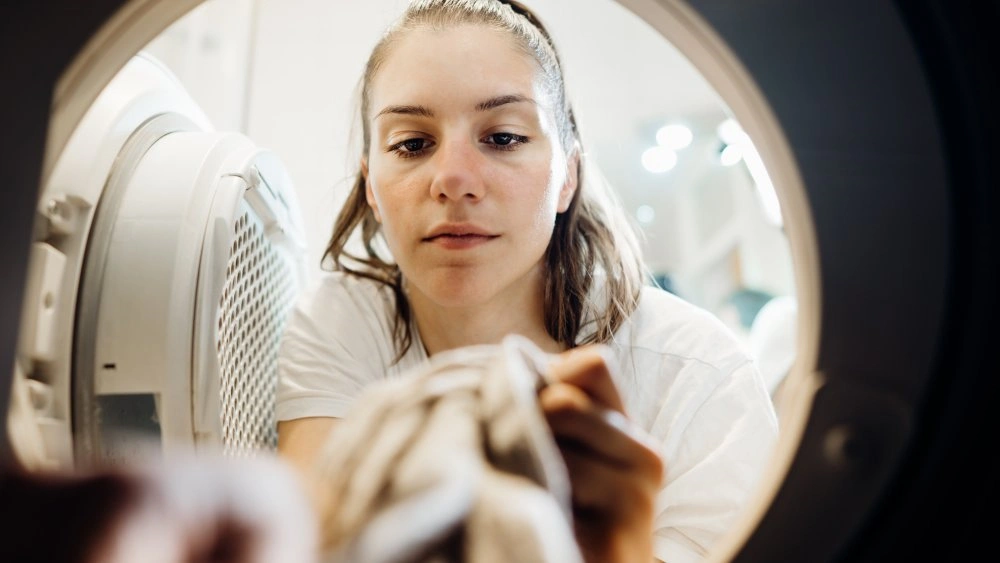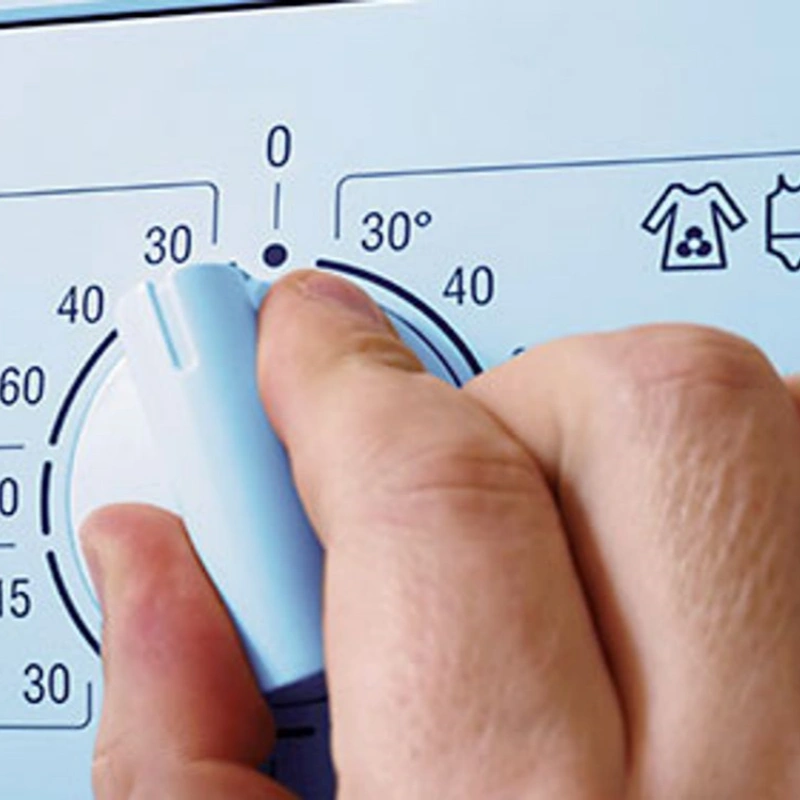If you want germ-free underwear, it’s important to know what temperature to wash underwear. Set your washer to at least 60°C (140°F). Hot water does a better job at killing bacteria, according to several studies. Take a look at these findings:
Study | Findings |
|---|---|
Wiksell et al. | Higher temperatures reduce bacteria more effectively. |
Honisch et al. | Lower temperatures may lead to more germs and even cross-contamination in your laundry. |
Choosing the right temperature matters, but so does using a quality detergent and taking care of your fabrics. Friendtex, a leader in premium underwear manufacturing, always puts hygiene and comfort first, so you can feel confident every time you do laundry.
Key Takeaways
Wash cotton underwear at 60°C (140°F) to kill 99.9% of bacteria and viruses.
Use cold or warm water (30°C to 40°C) for delicate fabrics to prevent damage.
Choose a quality detergent and consider adding an antibacterial cleanser for better germ removal.
Change and wash underwear daily to minimize bacteria and odors.
Air dry whenever possible to maintain fabric integrity and save energy.
What Temperature to Wash Underwear?
When you want to know what temperature to wash your underwear, you need to think about both hygiene and fabric care. Not all underwear is the same. The right temperature depends on the material. Let’s break it down so you can keep your underwear fresh, clean, and long-lasting.
Cotton and Premium Fabrics
Cotton underwear is tough and can handle higher temperatures. If you want to wash underwear for maximum germ removal, set your washing machine to 60°C (140°F).
This hot water setting kills 99.9% of bacteria and viruses, including stubborn ones like Staphylococcus aureus. You get a deep clean, especially if someone in your home is sick or if the underwear is heavily soiled.
Tip: Always check the washing instructions on the care label before you start. Some premium fabrics, like those used by Friendtex, can handle hot water, but others may need a gentler touch.
Here’s a quick guide for cotton and premium blends:
Use a 60°C (140°F) wash for cotton underwear when you want to kill germs.
For regular loads, a 30 or 40-degree wash cycle works well and helps preserve fabric quality.
If you have hard water, you might want to use warm water instead of hot to protect the fabric.
Friendtex uses high-quality, sustainable materials like organic cotton, Pima cotton, and Lenzing Modal. These fabrics feel soft but stay strong, even after many washes. Friendtex also holds certifications like GOTS, OEKO-TEX® STANDARD 100, and SEDEX, so you know your underwear is safe and free from harmful substances.
Fabric Type | Recommended Temperature | Why? |
|---|---|---|
Cotton | 60°C (140°F) | Kills germs, removes tough stains |
Premium Blends | 30–40°C (86–104°F) | Maintains softness, prevents damage |
If you want to keep your underwear looking and feeling new, always sort your laundry, use a good detergent, and dry thoroughly. Hot water is great for hygiene, but too much heat can cause shrinkage or damage over time. So, balance hygiene with fabric care.
Delicates and Synthetics
Delicate underwear, like silk or lace, and synthetics such as polyester or nylon, need a gentler approach. You should wash underwear made from these materials in cold or warm water—usually 30°C (86°F) or 40°C (104°F). This protects the fibers and keeps your underwear in top shape.
Set your washing machine to a gentle cycle with cold or warm water.
Avoid temperatures above 104°F (40°C) to prevent damage.
For silk or lace, hand washing at no more than 30°C (86°F) is best.
Note: Washing delicates in hot water can cause them to lose shape, stretch, or even tear. Cold water helps them last longer and keeps colors bright.
If you live in an area with hard water, stick to cold or warm washes. This helps prevent mineral buildup and fabric wear. Friendtex’s underwear uses advanced, sustainable materials that respond well to gentle washing. Their commitment to quality means your delicates stay beautiful and hygienic, wash after wash.
Here’s a quick checklist for washing delicates and synthetics:
Always check the care label for specific washing instructions.
Use a mild detergent.
Wash underwear after every use.
Dry completely before storing.
By following these tips, you keep your underwear germ-free and extend its life. Friendtex’s expertise in premium, eco-friendly fabrics means you get underwear that’s both safe and durable, no matter what temperature you wash underwear.
Washing Underwear for Hygiene

Detergent Choice
Choosing the right detergent makes a big difference when washing underwear. You want to remove germs, dirt, and odors without harming your skin or your favorite fabrics. Many people think any detergent will do, but that’s not true.
Detergents alone don’t kill germs; they mostly lift dirt from the fabric. If you want to eliminate bacteria and viruses, you need to combine a good detergent with hot water or add an antibacterial laundry cleanser. Using a heavy-duty detergent or activated-oxygen bleach can help fight tough microbes like Staphylococcus aureus.
Here are some important points to remember:
Gentle detergents with cold cycles can leave bacteria behind.
Warm water between 40°C and 60°C works best for reducing germs.
Detergent choice matters—activated-oxygen bleach is more effective than chlorine bleach for some pathogens.
Agitation during washing helps remove microbes.
Check out the benefits of using certified detergents in the table below:
Benefit | Description |
|---|---|
Bacteria Removal | Warm water and hypoallergenic detergent remove bacteria and protect fabric. |
Infection Prevention | Proper washing lowers the risk of yeast infections and bacterial vaginosis. |
Skin Comfort | Clean underwear prevents irritation and dermatitis. |
Fabric Choice | Natural fabrics like cotton help air flow and wick moisture, reducing germs. |
Friendtex uses premium, certified fabrics that respond well to gentle yet effective detergents. You get comfort and hygiene in every wash.
Washing Frequency
How often should you be washing underwear? Health experts say you should change your underwear at least once every 24 hours. Daily changes keep bacteria and odors away and help prevent skin problems. If you sweat a lot or exercise, you might want to change even more often.
Here’s what you should do:
Change underwear daily to minimize bacteria.
Wash after every use, especially if you’ve been active.
Use gentle detergents to avoid skin irritation.
Dry underwear completely before storing.
Not changing underwear often enough can lead to bacterial growth and unpleasant smells. A 2019 survey found that almost half of people go two or more days without changing, which increases health risks. Friendtex’s underwear, made from breathable and natural fabrics, helps you stay fresh and comfortable every day.
Wash Underwear: Special Cases

Illness and Heavily Soiled Items
When you or someone in your home is sick, you need to take extra care with underwear. Germs can linger on fabric, so you want to make sure you get rid of them completely.
Medical guidelines recommend using hot water—between 70°C and 80°C (158°F to 176°F)—for at least 10 minutes. This high temperature helps kill bacteria, viruses, and even tough pathogens like fungi.
Here’s a quick table to guide you:
Practice | Details |
|---|---|
Water Temperature | 70–80°C (158–176°F) for at least 10 minutes |
Detergent | Use an approved laundry detergent |
Disinfectant | Add for heavily soiled items or during illness |
Drying | Dry completely, preferably in a commercial dryer |
You can follow these steps for the best results:
Set your washing machine to the highest temperature safe for the fabric.
Use a high-quality detergent.
Add a laundry disinfectant or a cup of white vinegar for extra sanitizing power.
If you want to remove as many germs as possible, washing at 60°C (140°F) or higher is best. For extra protection, activated-oxygen bleach works well, especially when combined with bleach activators.
Sensitive Skin Tips
If you have sensitive skin, you know that underwear can sometimes irritate. The right washing routine can help you avoid itchy or inflamed skin. Choose longer, gentler cycles to make sure your underwear gets clean and all detergent rinses out. Don’t overpack your washing machine—give your clothes space to move.
Here are some tips to keep your skin happy:
Use the correct amount of detergent and always double rinse to remove residue.
Skip fabric softeners and dryer sheets, which often contain fragrances and chemicals.
Avoid harsh stain removers, bleach, and optical brighteners.
Air dry your underwear or use the lowest heat setting in the dryer.
Watch out for detergents with artificial fragrances, dyes, or preservatives. These ingredients can trigger allergic reactions, leading to redness or eczema. If you stick to gentle, fragrance-free products and rinse thoroughly, you’ll keep your underwear soft and your skin comfortable.
Drying and Care Tips
Air vs Machine Drying

When you finish washing your underwear, you might wonder whether to air-dry or use a machine dryer. Each method has its own perks. Air drying is gentle on fabrics and helps your underwear keep its shape and texture.
You just hang your underwear on a rack or clothesline, and let fresh air do the work. This method also saves energy, making it a more eco-friendly choice.
Machine drying, on the other hand, uses heat to dry your underwear quickly. The high temperature can kill more bacteria, which boosts hygiene. But there’s a catch—machine drying can damage delicate fabrics over time and cause shrinkage, especially if you use high heat.
Here’s a quick comparison to help you decide:
Benefit | Air Drying | Machine Drying |
|---|---|---|
Fabric Integrity | Gentle on fabrics, preserves shape and texture | High heat can damage fabrics over time |
Hygiene | Lower bacteria elimination | Effective bacteria elimination due to heat |
Eco-Friendliness | More sustainable, no energy consumption | Higher energy usage |
Shrinkage | Reduces risk of shrinkage | High temperatures can cause shrinkage |
If you want to keep your underwear looking new, try air drying whenever possible. For extra hygiene, you can use the dryer on a low-heat setting.
Preventing Damage
You want your underwear to last, so it’s smart to protect the fabric during drying. Delicate materials like cotton and spandex need gentle care. Using low-heat drying helps maintain the integrity of these fabrics.
Medium or low heat settings prevent loss of elasticity and shape. Over-drying can wear out your underwear, so keep an eye on the drying time.
Here are some simple tips to prevent damage:
Choose gentle warmth and control drying time.
Shrink underwear gradually with warm washes instead of high heat.
Avoid drying for too long.
Skip fabric softeners, which can break down fibers.
If you follow these steps after washing, your underwear will stay soft, comfortable, and durable. You’ll notice less fading and fewer holes, even after many laundry cycles. Taking care of your underwear means you get the most out of every pair.
Friendtex Quality and Sustainability
Premium Materials
You want underwear that feels soft, lasts long, and keeps you comfortable. Friendtex delivers just that by choosing premium, sustainable fabrics for every piece. You’ll find organic cotton, Pima cotton, bamboo, and Lenzing Modal in their collections.
These materials don’t just feel good—they’re better for the planet, too. Friendtex works with advanced manufacturing techniques to make sure your underwear holds up wash after wash.
You might wonder about safety and quality. Friendtex holds top certifications that guarantee their fabrics meet strict environmental and health standards. Take a look at some of the certifications they’ve earned:
Certification Name |
|---|
GOTS (Global Organic Textile Standard) |
Amfori |
Better Cotton Initiative |
These certifications mean you get underwear that’s free from harmful chemicals and made with care for the environment.
Eco-Friendly Practices
Friendtex doesn’t stop at great materials. They also lead the way in eco-friendly manufacturing. You help the planet every time you choose their products. Here’s how Friendtex compares to traditional industry standards:
Aspect | Friendtex Practices | Traditional Industry Standards |
|---|---|---|
Energy Source | Utilizes renewable energy from solar panels | Relies on fossil fuels |
Dyes and Finishes | Uses low-impact, non-toxic dyes | Often uses toxic chemicals |
Material Usage | Incorporates recycled materials and sustainable fabrics | Primarily uses virgin materials |
Waste Management | Focuses on reducing plastic packaging and waste | Limited recycling efforts |
Soil Health | Uses organic cotton and hemp, improving soil health | Conventional cotton often depletes soil |
Water Usage | Low-impact dyes require less water | Traditional dyes often require more water |
You can also make a difference at home. Sustainability experts recommend these simple steps for eco-friendly laundry:
Wash underwear after each wearing to stay hygienic.
Use cold water to save energy.
Try wash bags to catch microplastics from synthetics.
Pick vegetable-based detergents and skip synthetic fragrances.
Air-dry your underwear to use UV rays for disinfection and keep fabrics strong.
If you want to go further, try these tips:
Wash with cold water to cut energy use.
Air-dry your clothes to save power and help them last.
Run full loads to maximize efficiency and reduce waste.
Friendtex’s commitment to quality and sustainability means you get underwear that’s good for you and the planet. You make a smart, responsible choice every time you wear Friendtex.
Conclusion
You want your underwear to stay clean and last longer. Set your washer to at least 60°C (140°F) for germ-free results.
Dr. Charles Gerba says cold water “is designed to get clothing clean but not eliminate microorganisms.” Washing at 140°F or 60°C removes bacteria.
Choose gentle detergents and dry your underwear properly. Friendtex uses premium, sustainable fabrics so you get comfort and hygiene every time.
Regular washing with the right detergent keeps fabric strong.
Proper drying stops bacteria and helps underwear last.
Store clean underwear in a dry place to avoid mold.
Follow these tips for fresh, long-lasting underwear.
FAQ
How often should you wash your underwear?
You should wash your underwear after every wear. Daily washing keeps bacteria and odors away. If you sweat a lot or exercise, change and wash your underwear more often.
Can you use cold water to wash underwear?
You can use cold water for delicate fabrics. Cold water helps prevent damage and fading. For cotton and hygiene, hot water works better to kill germs.
What detergent works best for sensitive skin?
Pick a fragrance-free, hypoallergenic detergent. These products help prevent irritation and keep your skin comfortable. Always rinse underwear well to remove any residue.
Does air drying kill germs on underwear?
Air drying keeps fabrics strong and saves energy. It does not kill germs as well as machine drying. If you want extra hygiene, use a dryer on low heat or let sunlight help disinfect.


